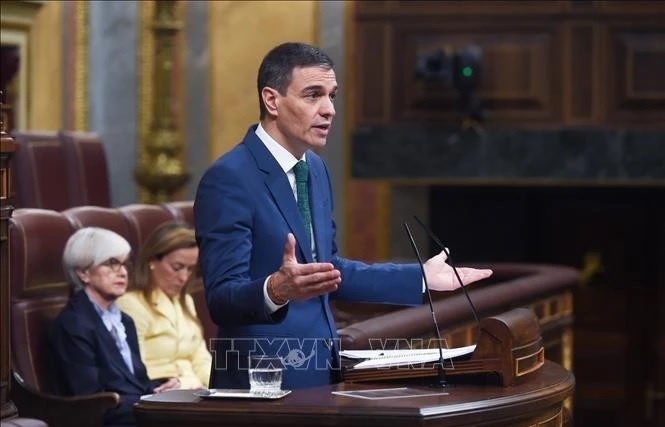SBV looks to drop bad debt below 3 per cent by Sept
 |
| According to the central bank's statistics, NPLs stood at 3.81 per cent by the end of March this year. Photo misa |
The previous target of the banking industry was to bring down the rate by the end of this year.
According to the central bank's statistics, NPLs stood at 3.81 per cent by the end of March this year.
Binh said that the new target is feasible, provided that all credit institutions step up and take drastic measures to handle NPLs to meet the new deadline.
"Credit institutions must make accurate debt classifications, adequately fund risk provisions, and actively sell NPLs to Viet Nam Asset Management Company," Binh noted.
Binh added that the central bank's decision to extend the credit room of credit institutions will depend on the way they handle NPLs.
He pointed out that if necessary, the central bank can raise the credit growth target for this year to 17 per cent, instead of 13-15 per cent set earlier this year, to boost economic growth.
Unlike previous years, credit growth in 2015 has been strong since early months, rising more than 6 per cent in the first half.
According to experts, after almost three years of bank restructuring, there have been several gains.
"Systemic risks in the banking sector has been contained and reduced, liquidity has improved significantly, interest rates have fallen, and steps have been taken to reduce and resolve the issue of NPLs," IMF Resident Representative Sanjay Kalra said in a statement on the central bank's website.
Kalra noted that the operationalisation of Viet Nam Asset Management Company (VAMC) in 2013 was an important first step in recognising that NPLs in the banking system needed a systemic approach (regardless of the varying estimates of NPLs – by commercial banks, the SBV, and others – which depended on incentives and specific assumptions, while there were significant data quality issues).
He added that since then, the VAMC has been actively purchasing NPLs from banks, but its pace needs to be accelerated. Banks have an extended period to provision against NPLs sold to the VAMC, while significant legal hurdles remain for the transfer of loan titles and collateral, which impede NPL resolution.
"To move this process forward quickly, the VAMC needs greater authority over the disposition of collateral and legal impediments, and the disposition of collateral in the distressed assets market needs to be resolved," Kalra observed, adding that the VAMC also needs a larger pool of resources – financial and human – to process NPLs that enter the distressed assets market.
"Such a market in turn needs enough buyers and sellers to be functional and may need external participation and expertise," he concluded.
What the stars mean:
★ Poor ★ ★ Promising ★★★ Good ★★★★ Very good ★★★★★ Exceptional
Latest News
More News
- Trump defiant as tariffs send world markets into panic (April 04, 2025 | 09:08)
- Stock market reacts sharply to US tariffs (April 03, 2025 | 15:25)
- Financial markets tumble after Trump tariff announcement (April 03, 2025 | 15:10)
- Stocks tank, havens rally as Trump tariffs fan trade war (April 03, 2025 | 14:46)
- Securities firms set ambitious business targets (April 03, 2025 | 11:28)
- Credit fuels private sector advances (April 02, 2025 | 14:00)
- Lenders accelerate bond issuance to entice fresh capital (April 02, 2025 | 11:58)
- Banks post strong Q1 profit growth (March 31, 2025 | 11:33)
- Proposal to tighten penalties for securities violations (March 28, 2025 | 17:20)
- DPM Phoc highlights VBSP's role in poverty reduction (March 28, 2025 | 16:19)



















 Mobile Version
Mobile Version